Results 5,091 to 5,100 of 12094
Thread: Anandtech News
-
06-10-15, 07:32 AM #5091
Anandtech: Seagate Announces SandForce SF3500 SSD Controller Series: Mass Production
The SandForce SF3000 series has become the unicorn of the SSD industry. For the past two years there has been a lot of hype about the new controller, but Seagate/SandForce has kept missing deadlines one after the other. Initially the third generation SandForce controller was supposed to ship in mid-2014, but obviously that didn't happen. Next we heard Q4'15, which was then changed to mid-2015 and the latest word I got at Computex is expected mass production in Q4'15, meaning that we could see first products shipping in early 2016.
The SF3500 package is considerably smaller than the SF3700The original paper launch back in late 2013 only included the SF3700 lineup, which was first supposed to cater all markets from entry-level client to enterprise. Last week Seagate announced that the SF3000 series has now been split into two: SF3500 for the client and SF3700 for the enterprise market. The reasoning behind the differentiation doesn't only lie in marketing as the SF3500 and SF3700 are separate dies with the SF3500 having four NAND channels whereas the SF3700 keeps the 9-channel design as announced previously. It makes a lot of sense to build a separate die for the client space and honestly I was a little skeptical about cost efficiency because it's practically impossible to build a silicon that is feature rich enough for the enterprise with a consumer friendly price tag. We've seen the client space moving towards 4-channel controller designs anyway, so I suspect introducing a smaller 4-channel controller was the only way SandForce could remain price competitive against Silicon Motion, which has taken a large share of SandForce's old clients.
The SF3500 series includes three SKUs and similar to the SF3700 silicon the controller supports both SATA 6Gbps and PCIe 2.0 (although only two lanes, whereas the SF3700 features four). The SF3514 and SF3504 are SATA and PCIe respectively, but the SF3524 has a switch that allows it to operate in both SATA and PCIe modes similar to the SF3700 SKUs. Unfortunately the switch isn't user-accessible as it has to be toggled by the manufacturer, so it's merely a feature that helps the OEMs with inventory management. The SF3524, being the high-end model, also has more supported firmware features, but Seagate isn't disclosing any at this stage, although I was told they are more back-end related rather than concrete features that are visible to the end-user.Seagate SandForce SF3000 Series Specifications Series SF3500 SF3700 SKU SF3514 SF3504 SF3524 SF3739 SF3759 # of NAND Channels 4 (400MT/s each) 9 (400MT/s each) Controller Frequency 275MHz 275MHz 300MHz N/A N/A Interface SATA 6Gbps PCIe 2.0 x2 (NVMe) SATA 6Gbps + PCIe 2.0 x2 (NVMe) SATA 6Gbps + PCIe 2.0 x4 (NVMe) Max Capacity 1TB 2TB NAND Support MLC, TLC MLC, TLC SLC, eMLC, MLC, TLC Sequential Read 550MB/s 900MB/s 900MB/s 1600MB/s 1600MB/s Sequential Write 450MB/s 525MB/s 525MB/s 670MB/s 670MB/s 4KB Random Read 100K IOPS 130K IOPS 130K IOPS 130K IOPS 130K IOPS 4KB Random Write 80K IOPS 120K IOPS 120K IOPS 80K IOPS 80K IOPS Mixed 70R/30W Random 80K IOPS 120K IOPS 120K IOPS 100K IOPS 100K IOPS Encryption AES-256, TCG Opal 2.0 & IEEE-1667 (eDrive) AES-256 AES-256 & TCG Entrerprise
Inherently the SF3500 is just a 4-channel version of the SF3700 and supports all SandForce technologies (DuraWrite, SHIELD, RAISE etc), but with one twist. The SF3500 is the first time SandForce is relying on external DRAM for caching the NAND mapping table, whereas the SF3700 and all older SandForce controllers only use the integrated SRAM. No user data is stored in the DRAM, so its function is purely to increase performance as well as reduce power up time when waking the system from sleep.
Another separating feature is the RAISE support. Because the SF3500 is client-oriented, it only supports level-1 RAISE, which uses one NAND die for protection against single page/block failures (in small capacity drives fractional RAISE can be used as it requires less than a full die). The SF3700 has full RAISE support and can operate in either level 1 or 2 mode with level-2 protecting against a full die failure (the 9th channel is there for that reason).
SandForce's focus in the SF3000 series has been mixed performance from day one. While most modern drives boast excellent peak read and write performance, nearly every drive experiences notable loss in performance under mixed read/write workloads. We've been testing mixed performance as a part of our 2015 Client SSD Suite and I certainly agree with SandForce that it's an area where improvement is needed, which is what the SF3000 series is promised to do. Seagate's/SandForce's internal tests put the SF3700 at much higher performance efficiency than the competing NVMe drive that Seagate couldn't officially disclose (hint: the manufacturer starts with an I).
Gallery: Seagate SandForce SF3000 Series SSD Controllers at Computex 2015





All in all, Seagate seems to be making progress with the SF3000 series. It's inevitably late from the original launch schedule, but on the other hand there are only a handful of client PCIe drives on the market right now, so if the new schedule sticks and the SF3000 is as good as Seagate is showing it to be, SandForce will definitely be back in the game. The Computex announcement was relatively high-level, but Seagate hinted that they will have a truckload of new details to share within the next two months, so we will stay tuned for more.
More...
-
06-10-15, 07:32 AM #5092
Anandtech: The Corsair CS450M PSU Review
Top tier PSUs certainly are technologically interesting, yet the mainstream products undoubtedly cover the vast bulk of the market. Today we are having a look at the Corsair CS450M, a reasonably priced 450W high quality PSU targeted right at the bulk of home/office PC users.
More...
-
06-10-15, 08:30 AM #5093
Anandtech: IBM pairs Xilinx FPGAs to Power 8 to create an education cloud service
IBM announced "SuperVessel", an OpenStack based cloud service that enables students and developers to develop applications on a POWER 8 based infrastructure. What makes this cloud service interesting is the announcement that Hemant Dhulla, Vice President of Data Center and Wired Communications for Xilinx made:
Xilinx is delighted to have been chosen as the provider of FPGA accelerators for the IBM SuperVessel cloud. FPGA-based compute acceleration is a critical part of the OpenPOWER Foundation vision to handle demanding workloads in the most cost and power-efficient way. For this reason, a CAPI-enabled Xilinx FPGA is attached to every IBM POWER8 node in the SuperVessel cloud. The research and development being done in the SuperVessel is helping to define the future of heterogeneous computing.”FPGAs, or field-programmable gate arrays are traditionally used to perform a specific algorithm in hardware. The result is a bulky and expensive chip (produced in low quantities) that runs a certain algorithms at very high speed and low latency.
Offloading some processing tasks to a specialized chip is certainly nothing new. APUs are CPUs that offload some of their tasks to integrated GPUs. But quite a few parallel algorithms run fast but pretty inefficiently on GPUs. In many cases, an FPGA uses a lot less power.
Intel has been delivering "customized" Xeons to large customers such as Amazon en Facebook, and has been promising that it will integrate Altera FPGAs inside certain Xeons. Intel recently bought Altera for $16.7 Billion.
But IBM seem to have beaten Intel to the FPGA punch with CAPI, the POWER8's Coherent Accelerator Processor Interface. IBM does not integrate FPGA inside the POWER8 package (yet), but communicates coherently over the PCI express interface.

The most interesting fact about "Supervessel" that is IBM managed to make a cloud service that makes ample us of - traditionally expensive - FPGAs, and that the necessary software is in place to make it relatively easy to make use of those FPGAs. What software did IBM implement to make offload some of the processing work to the Xilinx FPGAs? Unfortunately, so far we only saw the press release and it is very light on technical details. Nevertheless, it is interesting to note that the POWER 8 Fondation is making a lot of progress in very little time - it has been founded at the end of 2013.
More...
-
06-10-15, 08:30 AM #5094
Anandtech: SFF-8639 Connector Renamed as U.2
As SATA Express never took off because of the two-lane limitation, the SSD and motherboard industries have been looking for an alternative connector for connecting 2.5" SSDs over PCIe. SFF-8639, which is essentially SATA Express on steroids with support for four PCIe lanes, has been viewed as the most potent connector because it already has industry support in the enterprise space and with the SSD 750 Intel brought the SFF-8639 connector to the client side. Given that SFF-8639 isn't a very consumer facing name (even I've had trouble remembering the numbers), the SSD Form Factor Working Group has decided to rename the connector as U.2 to make it more marketable. That coincides well with M.2 that has already been used in the industry for a couple of years and more importantly both connectors now carry alike naming.
Whether U.2 and 2.5" PCIe SSDs take off in the client space remains to be seen, though. The biggest hurdle is the expensive cabling because unlike normal SATA and SATA Express cables, the U.2 cable consists of several small, shielded cables that increase the cost. From what I have heard that is the reason why the industry came up with SATA Express in the first place because the OEMs wanted to keep the cabling cost equivalent to existing SATA cables.
I believe M.2 will be the main connector / form factor in the client space, but there is still a market for high performance and capacity 2.5" PCIe SSDs as M.2 has more physical limitations that restrict the capacities and thermals. I can see U.2 in high-end motherboards where the connector and cable costs aren't that big of an issue, but we'll see what happens over the next year or two.
Source: Hardwarezone via PC Perspective
More...
-
06-10-15, 09:00 AM #5095
Anandtech: be quiet! Showcases New Silent Base 600 Case & SilentWings 3 Fans
be quiet! had two new products to show in its suite at Computex. The first one is Silent Base 600, which is a smaller and more affordable version of the Silent Base 800 that was first showed at last year's Computex. Typical to be quiet! brand, the company focused on building a quiet case, yet still offering excellent cooling performance. be quiet! will be offering models with and without the side window, and the case comes with two pre-installed Pure Wings 2 fans (140mm in the front and 120mm in the back) with support for up to seven fans (six in the windowed model). GPUs and CPU coolers of up to 400mm and 170mm are supported respectively and the Silent Base 600 will be available in September in three colors (orange, black & silver) with MSRPs of $100 (no window) and $115 (with side window).
Gallery: be quiet! Silent Base 600 at Computex 2015



The other new product be quiet! showcased is the third generation SilentWings fan. be quiet! modified the shape of the blades to produce higher airflow without increasing the noise level and SilentWings 3 is also the only consumer-oriented fan with a 6-pole motor. Both PWM and non-PWM models will be available in October with the Euro MSRPs being about 20€.
Gallery: be quiet! SilentWings 3 at Computex 2015

More...
-
06-10-15, 09:46 AM #5096
Anandtech: Apple’s Metal API Comes to OS X Desktops
At last year’s WWDC, Apple introduced their Metal API for iOS 8. A low-level graphics API, Metal was originally designed to bring the benefits of low-level graphics programming to Apple’s mobile operating system. And while we typically don’t think of mobile devices as being GPU-bound, in reality Apple has been packing some relatively powerful GPUs like GXA6850 with what are relatively speaking still fairly weak CPUs, which means Apple has ended up in a situation where they can be CPU-bottlenecked on draw calls.
Metal, despite being the 3rd such low-level API to be introduced, was the first to reach production status. Microsoft’s DirectX 12 is arguably not there yet (Windows 10 is still in testing), and Khronos’s Vulkan was still in its primordial Mantle form at this point in 2014. What this means is that out of all of the vendors, it’s arguably Apple who has the lead time advantage in low-level API development. Which is why for the last year we have been wondering if Metal would stay on iOS, or make the jump to OS X.
Yesterday we got our answer, with the announcement from Apple that Metal would be coming to OS X “10.11” El Capitan, and that it would be part of a larger investment into Metal for the company. Along with bringing Metal to OS X, Apple is going to be releasing new API kits that interface with Metal to simplify development, and internally Apple is now using Metal (when available) for parts of the desktop composition rendering chain. At this point it’s fair to say that Apple has gone all-in on Metal.
Consequently the fact that Metal is now over on OS X is not unexpected, but whether it has been planned for or not, it means that we now have 3 low-level APIs on the desktop as well as mobile. OS X’s Metal will be going head-to-head with Microsoft’s DirectX 12 and Khronos’s Vulkan, and this is the first time in a very long that we have seen a viable and competitive 3rd graphics API on the desktop, as DirectX and OpenGL have been the reigning APIs since the turn of the millennium.
As for what this means for Mac users, in the short run it’s a good thing. With Vulkan still in development, had Apple not implemented Metal on OS X, OS X would have needed to stick with classic OpenGL for another year until OS X 10.12. Going with their own API, as was the case with mobile, gets a low-level API on OS X sooner. Furthermore because it’s been on iOS for the last year, Apple gets to leverage all of the developer experience and code already written for Metal, and bring that over to OS X. Which is why developers like Epic are able to show off engines using Metal on OS X so early.
In the long run however there are some big unknowns left to answer, which could have a big impact on how things play out. Apple has not yet released the complete documentation for the newest version of Metal – specifically, we don’t have feature lists – so how the Mac and iOS versions compare feature-wise remains to be seen. My biggest concern here is that Apple will put OS X and iOS at parity, essentially limiting the features available to the lowest common denominator of iOS, leading to Macs in general being behind the curve in graphics features. The other big question is whether Apple will support Vulkan next year once it’s done, or whether they will stick with Metal, essentially turning OS X’s graphics stack proprietary. Which for users could lead to a reduction in game ports to the Mac if developers have to go write against a Mac-specific graphics API.
One thing that is a pretty sure bet at this point is the GPUs that will support Metal. In short, don’t expect to see anything that can’t support Vulkan support Metal due to a lack of necessary features. So I’m expecting Metal compatibility to start with Intel’s Haswell (Gen 7.5) iGPUs, AMD’s GCN dGPUs, and NVIDIA’s Fermi/Kepler dGPUs. El Capitan works on a much wider range of machines of course, so this means only a fraction of those machines get to experience Metal. Though this was the same situation on mobile as well.
As for developers, things will be interesting. As I mentioned before Apple seems to be going all-in on Metal, starting with the fact that they will have Metal back-ends for their Core Graphics and Core Animation frameworks. And actually I’m a bit surprised by this, as basic compositing is not something that is draw call limited. Apple is claiming upwards of 50% performance increases here, so I’m curious just how this works out, but I suspect these are based on low-level benchmarks. Draw call performance is not the only benefit of Metal, but it is the most immediate, so Apple may be leveraging the harder to get GPU benefits here, or just wringing every last Joule of power out by getting to an API that isn't doing high-level state checking.
In any case, by building Core frameworks off of Metal, Apple is in a position where they have to ensure Metal drivers are working well, which is to the benefit of developers. Meanwhile Apple is going one step past Metal on iOS 8 with the release of MetalKit, which is a set of utility functions for Metal to help speed Metal development. As we’ve mentioned before one of the few real pitfalls of low-level APIs is that to best utilize them you need guru-level programmers – after all, the API doesn’t have high-level safety nets to keep developers out of trouble – and with MetalKit Apple is at least partially resolving this issue by providing some base functionality for programmers.
Wrapping things up, though not an unexpected move from Apple, it will none the less be interesting to see how their efforts with Metal go. As a tightly integrated vendor they have the advantage of being able to move quickly when they choose to, which is why we’re seeing Metal come to OS X so soon and to get used by Core OS components so soon. Metal is just a graphics API, but due to Apple’s timing OS X will be the real test for low-level APIs on the desktop, and not just for gaming. Apple is in an interesting position to take advantage of these new APIs like no one else can, so in several ways they are going to be the pathfinder on just what can be done with these APIs.
More...
-
06-10-15, 04:30 PM #5097
Anandtech: Futuremark Announces VRMark: A Benchmark For Virtual Reality Systems
Today Futuremark revealed that they are in the process of developing a benchmark for virtual reality hardware and displays. In the same naming style as PCMark and 3DMark, this new virtual reality benchmark will be called VRMark. According to Futuremark, VRMark will use a combination of software and hardware to evaluate a system's ability to provide a high quality virtual reality experience.
Because virtual reality systems have many aspects that all need to be functioning properly to provide a good experience, the process of benchmarking them is different from how you would test a computer or a smartphone. VRMark will evaluate a system's ability to provide a high and consistent frame rate, as with virtual reality it's important to both have a high frame rate, as well as to ensure that the timing between those frames is consistent.
In addition to measurements of the hardware's ability to render and display frames in a timely and smooth manner, VRMark will evaluate the sensors located in a VR head-mounted display. Lowering sensor latency has been a big part of the development process for VR headsets, and VRMark will help companies and reviewers evaluate this aspect of VR system performance.
There's currently no word on when VRMark will be released, apart from the promise that it will launch in 2015. Virtual Reality benchmarks like VRMark will certainly be a useful tool to see how the various VR headsets currently being developed compare to one another.
More...
-
06-10-15, 05:32 PM #5098
Anandtech: Microsoft Surface Hub Availability And Specifications Announced
Today Microsoft announced more news regarding the Surface Hub, which is their large-screen collaboration device. Built specifically for the business conference room, the Surface Hub packs some impressive features inside.
The first bit of news though is that the Surface Hub will be available for pre-order starting on July 1st, and shipments will begin in September. It will initially be available in twenty four markets, with the United States, Canada, Australia, Austria, Belgium, Denmark, France, Finland, Germany, Ireland, Italy, Japan, Luxembourg, the Netherlands, New Zealand, Norway, Portugal, Qatar, Singapore, Spain, Sweden, Switzerland, United Arab Emirates and the United Kingdom all getting first dibs on this new device. The prices will seem steep to anyone who does not often furnish a conference room, with the smaller 55-inch model being offered for $6999, and the 84-inch model will sell for $19,999.
That is not inexpensive at all, but it should actually be less expensive that some of the other conference room solutions, and yet pack in technology that they can’t offer. Here is a table of the listed specifications:
The first notable aspect is the displays, which both feature optically bonded projective capacitance sensors to minimize reflections. Both models also can support an insane 100 points of concurrent multi-touch, and three simultaneous pen inputs. The 55-inch model is a 1920x1080 panel, and the 84-inch is a 3840x2160 resolution, and both have a refresh rate of 120Hz. The touch digitizer is also 120Hz, and according to Microsoft it makes the experience much more akin to an analog counterpart.Microsoft Surface Hub Surface Hub 55" Surface Hub 84" Dimensions H: 31.75" (806.4 mm)
W: 59.62" (1514.3 mm)
D: 3.38" (85.8 mm)H: 46.12" (1171.5 mm)
W: 86.7" (2202.9 mm)
D: 4.15" (105.4 mm)Weight 105 lbs (48 kg) 280 lbs (127 kg) CPU Intel Haswell (4th Gen) Core i5 Intel Haswell (4th Gen) Core i7 GPU Intel HD 4600 NVIDIA Quadro K2200 640 CUDA Cores RAM 8 GB 8 GB Storage 128 GB SSD 128 GB SSD Display 55" 1920x1080 @ 120 Hz
1300:1 Contrast Ratio
100-point Multi-touch
Three Simultaneous Active Pens
Projective Capacitance optically bonded sensor84" 3840x2160 @ 120 Hz
1400:1 Contrast Ratio
100-point Multi-touch
Three Simultaneous Active Pens
Projective Capacitance optically bonded sensorNetworking Wired 1 Gbps
Wireless 802.11ac
Bluetooth 4.0 LE
NFC Reader
Miracast EnabledPorts Internal PC
(1) USB 3.0 (bottom) + (1) USB 3.0 (side access)
(2) USB 2.0
Ethernet 1000 Base-T
DisplayPort Video Output
3.5mm Stereo Out
RS232 Serial Port
RJ11 Connector for system level control
Alternate PC
(2) USB 2.0 type B output, connection for:
Camera
Sensors
Microphone
Speakers
Touchback™
(1) DisplayPort Video Input
Guest PC
DisplayPort Video Input
HDMI Video Input
VGA Video Input
3.5mm Stereo Input
(1) USB 2.0 type B Touchback™ Output/td>Sensors (2) Passive Infrared Presence Sensors
Ambient Light SensorsSpeakers (2) Front Facing Speakers Microphone High Performance, 4 Element Array Cameras (2) 1080p @ 30fps Price $6,999 $19,999
These will not be just displays to project to either. Powering the Surface Hub is a custom version of Windows 10, which is run on a Haswell Core i5 on the smaller model and a Core i7 on the larger one. The 84-inch model also jumps from integrated graphics to the NVIDIA Quadro K2200, which is a Maxwell based GM107 GPU with 640 CUDA Cores. Both Hubs come with 128 GB of SSD storage and 8 GB of RAM, as well as Gigabit Ethernet and 802.11ac, with Bluetooth 4.0 LE, NFC, and Miracast available.
They will also feature two front-facing stereo speakers, a four element microphone, two 1080p cameras each, as well as passive infrared presence sensors and ambient light sensors.
I think the steep price is going to keep these devices closely locked to their target audience of conference and meeting rooms. It would be very cool to have an 84-inch Windows 10 powered Smart TV, but for $20,000 it would be a tough sell.
I’ve asked a couple of questions to Microsoft to get some more details about this device though, including its ability to handle HDMI 2.0 inputs and a few other things, so once I hear back I’ll update the post.
Source: Microsoft
More...
-
06-11-15, 03:42 AM #5099
Anandtech: Lian Li Computex 2015 Booth Tour
Lian Li had close to a dozen new or prototype-level cases on display at Computex. I've added most in the gallery at the end of this post, but I'll go through a few of the highlights here as well.
The first one is the PC-V33A, which is a box-like case in which the motherboard is mounted horizontally. The top cover is made out of single piece of aluminum, but it opens up for easy installation.
The case above is more of a conceptual prototype where Lian Li is playing around with a taller case design. Instead of having hard drive bays next to the motherboard, there's room for four hard drives in the top chamber, which allows for better airflow in the main chamber.
One of the more down to earth designs is the PC-K621, which is also Lian Li's first non-aluminum case. Traditionally Lian Li has kept the Lancool brand for value cases, but it seems that the company is trying to consolidate everything under a single brand now. The PC-K621 is made out of steel and plastic, but it does feel very sturdy and despite the fact that the front panel is made out of plastic, it has a metal-like look in it. Pricing will be about $70, so while it's not exactly a value case it's still considerably cheaper than the rest of the Lian Li cases.
One minor change Lian Li has made to its cases is changing the power button material from plastic to aluminum. The company received many complaints of the power button not having the same feel as the rest of the case, so as any respectable company Lian Li listened to its customers and made the change.
And obviously no Lian Li booth tour is complete without the computer desk case. Lian Li has modified the design a bit so that one can now easily sit with legs under the table, which was one of the issues the earlier cases had (note: that's Kip Hartwell, Lian Li's marketing rep, in the photo, not me). The desk is still expensive, though, and Lian Li doesn't really have any plans of making a value model, but it's a relatively small niche anyway.
Gallery: Lian Li Computex 2015 Booth Tour





Check out the gallery above if you're interested in seeing what else Lian Li had to offer!
More...
-
06-11-15, 07:52 AM #5100
Anandtech: Phanteks Computex 2015 Booth Tour
Phanteks had its new Enthoo EVOLV series cases in both mini-ITX and full ATX form factors on display in its suite at Computex. The mini-ITX version is made out of steel and available in two color schemes (white-black & red-black). There's a single 200mm fan installed in the front with room for two 120/140mm fans at the top and one at the back. It can take a 330mm GPU and a 200mm CPU cooler, so you can build a fairly powerful system. One of the more special aspects of Phanteks' cases is the PSU cover, which essentially hides the PSU cables to create the clean look that many desire.
The ATX version is fully made out of 3mm thick aluminum (despite the side window). For some reason the design and overall build remind me of the original Mac Pro, which isn't a bad thing at all.
One of the unique aspects in the case are fully modular hard drive bays. I have to say I really like the concept because typically many ATX cases easily have +5 irremovable bays, but in reality most users probably won't use more than one or two. Phanteks includes three with the case, but obviously the user can buy extra ones if needed.
There are actually two hard drive bays and SSD brackets behind the main chamber, so in most cases the user won't even need the modular HDD bays and can thus maximize airflow by not having anything between the fans and motherboard.
Phanteks also had a prototype of a dual-system case that can take a full ATX motherboard and a mini-ITX one. The interesting part is that Phanteks is working on a power splitter, so the two systems could be powered by a single PSU to save on space and cost. As you can see, the concept isn't really final yet because Phanteks needs to some custom cabling in order to be able to close the case since right now the cables come off too much. It's a niche product for sure, but the idea of running two full systems inside a decent size case is definitely alluring. See the gallery for more shots of the prototype and other cases Phanteks had to show!
Gallery: Phanteks Computex 2015 Booth Tour





More...
Thread Information
Users Browsing this Thread
There are currently 26 users browsing this thread. (0 members and 26 guests)




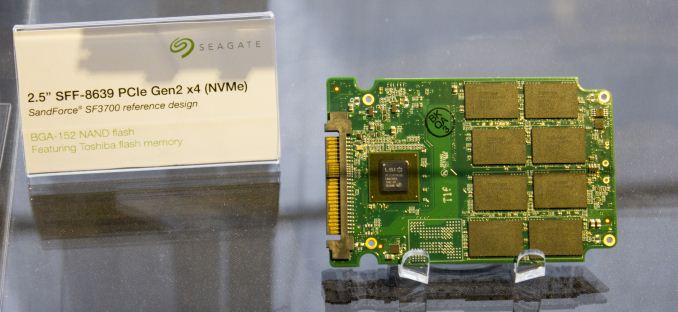
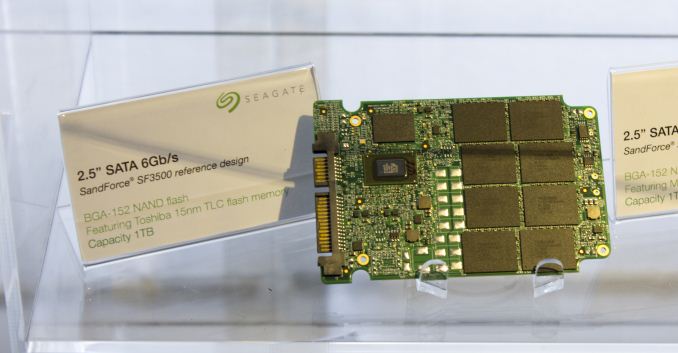

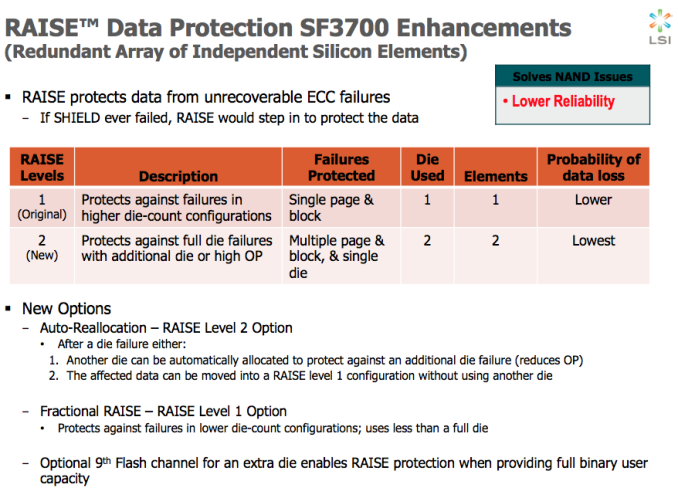
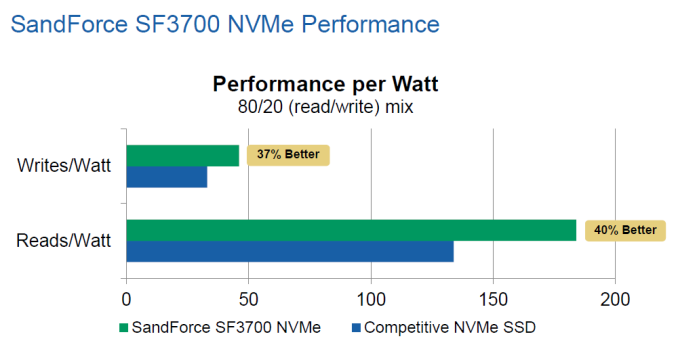

 Quote
Quote




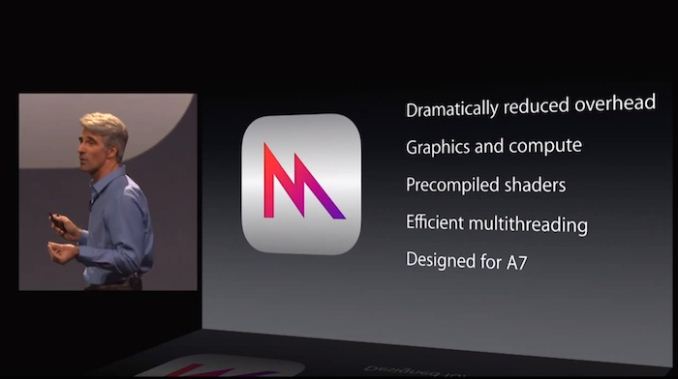



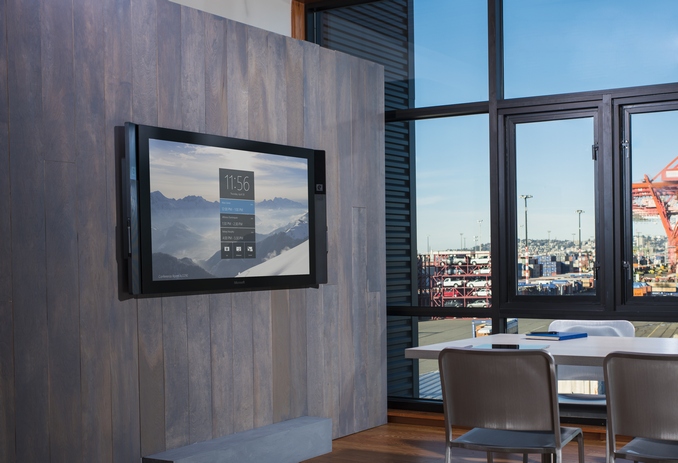

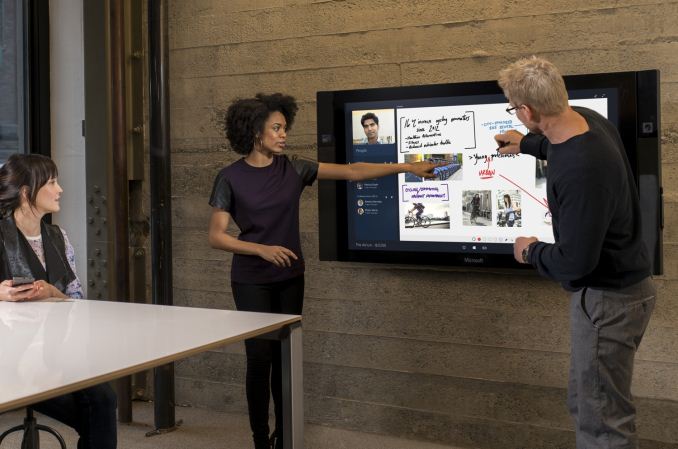

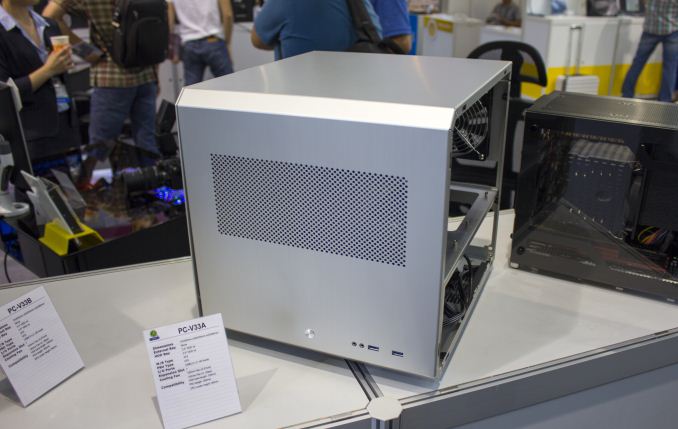


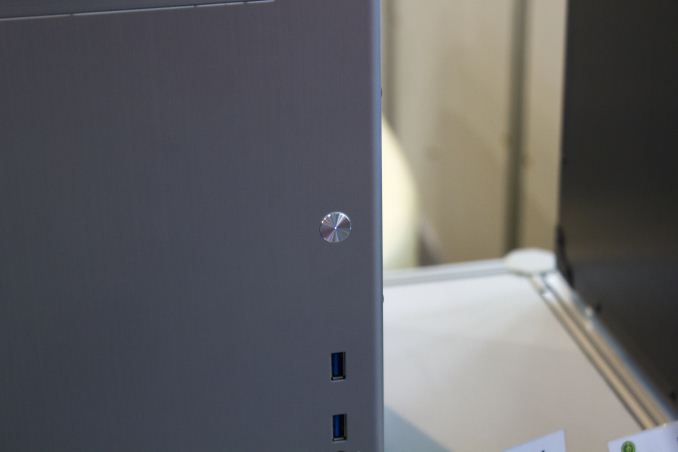
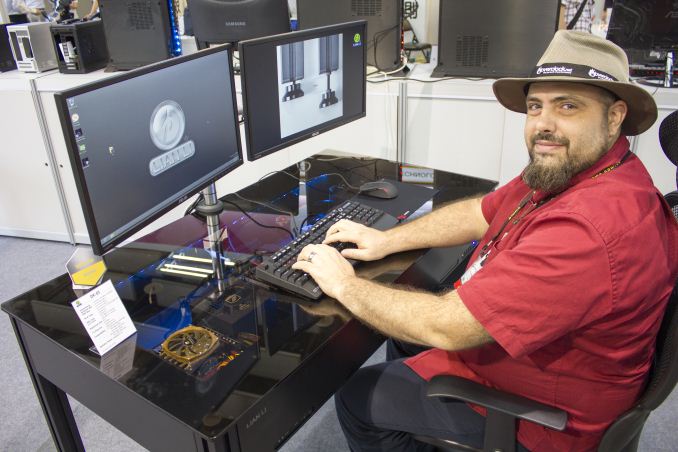





















Bookmarks